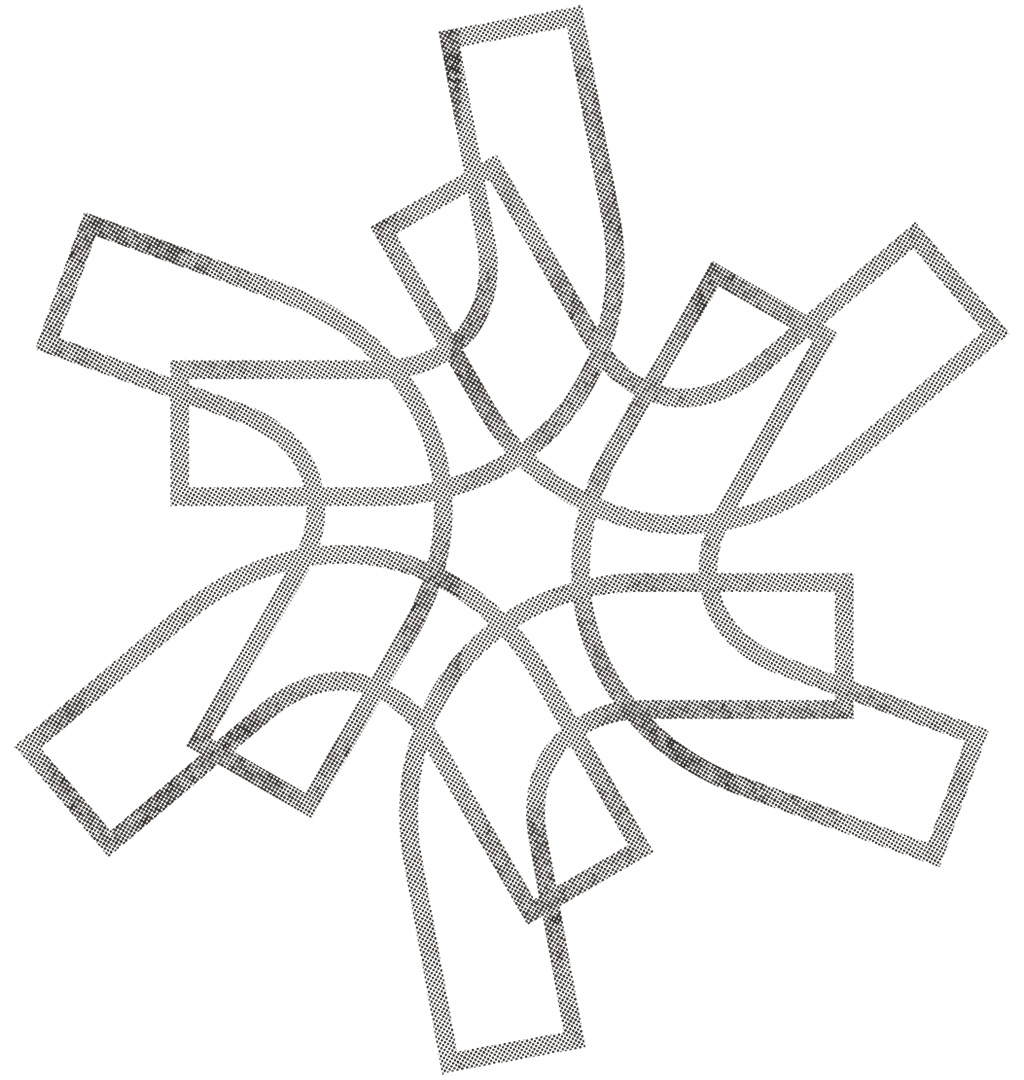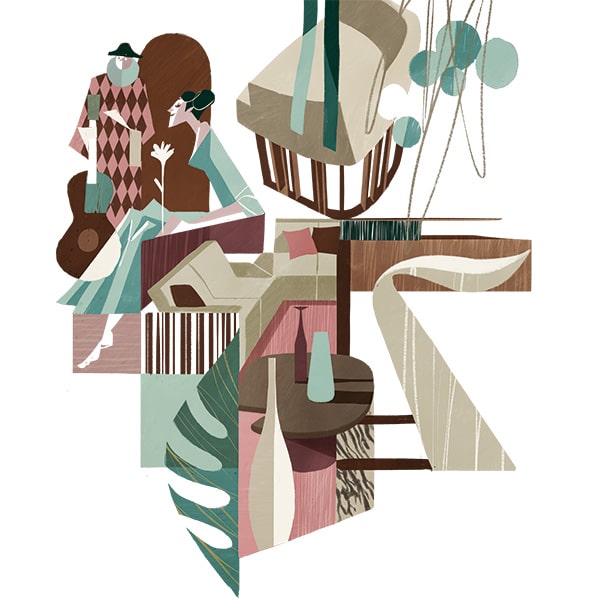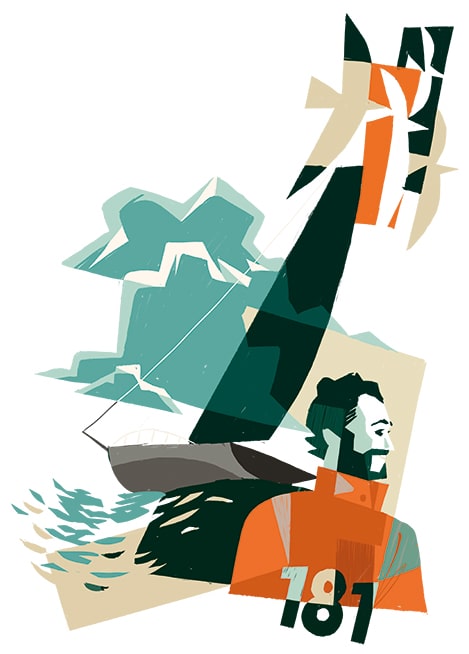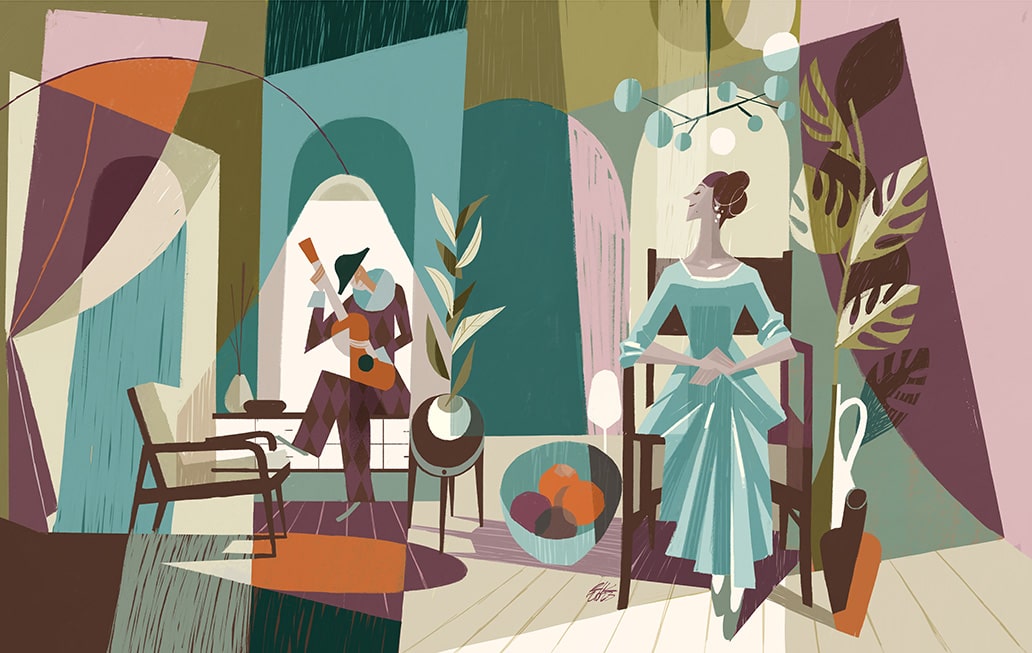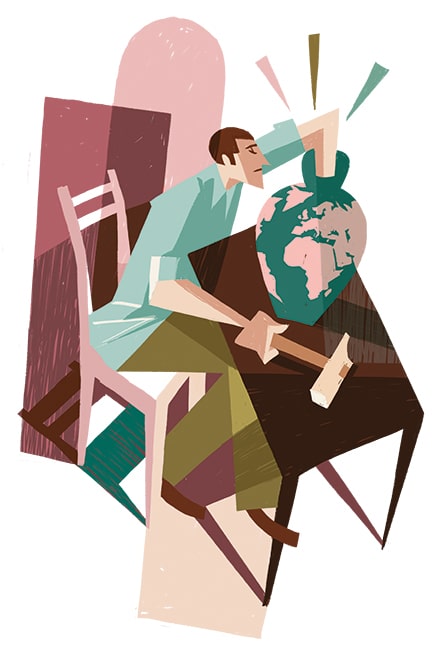EYE ON ART | DIE AVANTGARDE VON RIK
DIE AVANTGARDE VON RIK
Er würde gerne Koch, Musiker, Agronom, Önologe, Restaurator, Konditor, Gärtner sein... und stattdessen ist er Illustrator. Gebürtiger Piemonteser mit dem Traum, Japan zu besuchen, ist Riccardo Guasco, alias Rik, ein gescheiterter Bohemien, Nomade in spe, aber sesshaft von Natur aus oder aufgrund Faulheit. Er sammelt Ideen und Anregungen auf der Straße, aber er verarbeitet sie und vielleicht, wer weiß, malt er sie nur, wenn er im sicheren Hafen ist. Seine Reisen, die echten, macht er durch Zeichnen.
von Roberta Busnelli
Riccardo Guasco wacht ziemlich früh am Morgen auf, wenn er kann, und beginnt zu laufen. Es ist die Stunde, die der Bewegung, dem Hören von Podcasts oder Musik, der Entwicklung von Ideen und Verpflichtungen gewidmet ist. Dann bringt er seine Kinder in die Schule – Gloria und Gualtiero – kommt ins Büro und arbeitet am Morgen an einem Entwurf einer Zeichnung und am Nachmittag an der Färbung und Fertigstellung eines anderen. Wenn er es schafft, am Abend, wenn alle schlafen gehen, zeichnet er noch ein wenig – persönliche Dinge, auf dem Notizbuch, kleine Leinwände, Skizzen. «Es scheint paradox, aber wenn ich etwas Freizeit habe, zeichne ich. Es ist mein Hobby und mein Job zugleich“, lächelt Rik. Wenn er nicht zeichnet, ist er mit seinen Kindern beschäftigt, um zu lesen, zu spielen, Fahrrad zu fahren oder… zu zeichnen! Es scheint ein ruhiges Leben zu sein, das von einer einzigen Routine – Arbeit und Familie – geprägt ist, aus der jedoch wie ein unterirdisch fließender Karstfluss, der dann kraftvoll an die Oberfläche kommt, die Flamme einer tiefen und instinktiven Leidenschaft entspringt – die Liebe zur Kunst. «Ich habe immer sehr stark den Einfluss der Kunst des 20. Jahrhunderts und der künstlerischen Avantgarde gespürt, die eine unerschöpfliche Quelle der Inspiration sind», erzählt er. «Vom Kubismus bis zum Futurismus, vom Suprematismus bis zu den Fauves habe ich mich immer für das Konzept der Überwindung der Realität begeistert, das in diesen Strömungen sehr präsent ist. Hier begann meine Recherche. Das Ergebnis, denke ich, ist ein süßer Frankenstein, der aus weichen kubistischen Formen, extrem romantischen geometrischen Figuren, lächelnder Abstraktion und leuchtenden Farben neben Pastelltönen besteht – ein Oxymoron, vielleicht oder vielleicht nur Gegensätze, die sich anziehen». Wir sprechen über Säulen wie Mondrian, Haring, Calder, Duchamp, Fontana, Malevich, Picasso…
Und wo schlägt heute Riccardos Herz? Auf welchen Horizont richten Sie Ihren Blick? «Nach der enormen digitalen Welle, die zu einer Erweiterung des kreativen Potenzials geführt hat, aber uns abgesondert und alles auf kleine Bildschirme gesetzt hat, gehen meine Vorlieben zunehmend auf analoge Kreativität und Straßenkunst, die dir den Luxus gewährt, Kunst in der städtischen Umgebung zu sehen und dir Zeit lässt, sie Tag für Tag, Straße für Straße in dir aufzunehmen». Jenseits der Kunst, die ihn inspiriert, Vergangenheit oder Gegenwart, konzentriert sich sein professionelles Auge auf das gewünschte Gleichgewicht oder Ungleichgewicht der Komposition. «Ein Werk muss eine perfekte Struktur aus Rhythmus und Stagnation, aus Fülle und Leere, aus Kombinationen von Farbe und Hell-Dunkel sein». Und dann steht über allem die Form. «Wenn ich mich meiner persönlichen Arbeit widme, würde ich bei der reinen Bleistiftlinie stehen bleiben, als wäre das Werk praktisch fertig, sobald ich die richtige Form gefunden habe». Die menschliche Präsenz ist immer da, Protagonist oder einfaches Erscheinen je nach Projekt, untersucht mit einer besonderen Sensibilität für Hände und Gesicht. «Die beiden wichtigsten Elemente, die ich für die Kommunikation brauche, sind die Gesten und der Blick», erklärt Riccardo. «Mich interessiert das Thema und die Botschaft, Techniken und Unterstützung sind nur ein Mittel, um sie zu vermitteln. Was ich will, ist, andere Ideen zu bringen, Werke zu schaffen, die andere Werke, andere Gedanken oder andere mögliche Wege inspirieren, die ich nicht gegangen bin oder mir vorgestellt habe. Eine Botschaft wird künstlerisch, wenn sie diesen Funken in sich trägt, der sie am Leben erhält, und von Mensch zu Mensch weitergeben lässt». Und die hamletische und ewige Frage nach Kreativität, Inspiration… was ist das, woher kommt sie? «Sie entsteht aus dem, was mich umgibt, aus dem Alltag. Die Inspiration wird gepflegt, regelmäßig gegossen und wächst, indem man die Welt mit Augen, Herz, Gehirn und einem Hauch von Ironie betrachtet.
Rik verstand bald, dass der eigene «Tonfall», der Heilige Gral der Künstler, durch einen Wünschelrutengang gefunden wird, der nach so viel Recherche – der schönste Teil der Arbeit – nach so viel Zeichnen aus reinem Vergnügen am Zeichnen, nach so viel vielen Liebe auf den ersten Blick für Künstler, Stile, Werke bietet uns die Belohnung – nach Hause zurückkehren und den eigenen Weg vor Augen haben «, der nichts anderes ist als die Summe all dessen, was wir mit so viel Leidenschaft gesehen und gehört haben, die Summe unendlicher Stunden, die wir mit dem Zeichnen verbracht haben. Der Stil kommt, wenn wir aufhören, danach zu suchen und uns selbst und das, was wir gelernt haben, betrachten. Dann müssen wir uns auf die unvermeidliche Veränderung vorbereiten, denn hoffentlich werden wir uns und unsere Sichtweise im Laufe der Zeit ändern».
Lassen wir nun Rik in seinem Atelier, bei seinen Zeichnungen und seinen Pinseln, der Tusche, dem Aquarell und dem Acryl, lassen wir ihn zwischen Gravuren, Aquatinta, Lithographien und Siebdrucken, zwischen den improvisierten Rhythmen der Jazzmusik und den Vintage-Covern von Neil Fujita und Jim Flora. Lassen wir ihn experimentieren und sein tiefstes Wesen zum Ausdruck bringen und bringen wir seinem edlen Handwerk der Geschichtenerzähler Respekt, Anstand und Feingefühl entgegen. Lassen wir ihn in Ruhe, wie es ihm gefällt, in Stille und im Dialog mit seiner Leidenschaft.
